Related Research Articles
Malcolm III was King of Scotland from 1058 to 1093. He was later nicknamed "Canmore". Malcolm's long reign of 35 years preceded the beginning of the Scoto-Norman age. Henry I of England and Eustace III of Boulogne were his sons-in-law, making him the maternal grandfather of Empress Matilda, William Adelin and Matilda of Boulogne. All three of them were prominent in English politics during the 12th century.
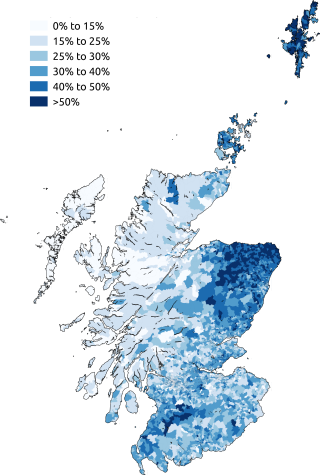
Scots is an Anglic language variety in the West Germanic language family, spoken in Scotland and parts of Ulster in the north of Ireland. Most commonly spoken in the Scottish Lowlands, Northern Isles, and northern Ulster, it is sometimes called Lowland Scots to distinguish it from Scottish Gaelic, the Goidelic Celtic language that was historically restricted to most of the Scottish Highlands, the Hebrides, and Galloway after the sixteenth century; or Broad Scots to distinguish it from Scottish Standard English. Modern Scots is a sister language of Modern English, as the two diverged independently from the same source: Early Middle English (1150–1300).
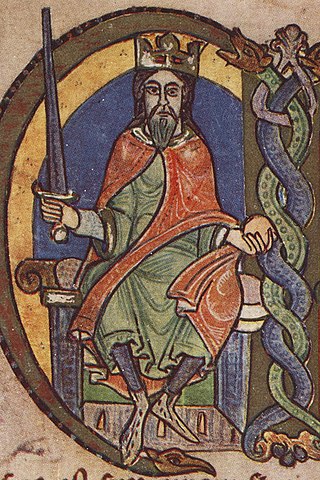
David I or Dauíd mac Maíl Choluim was a 12th-century ruler who was Prince of the Cumbrians from 1113 to 1124 and later King of Scotland from 1124 to 1153. The youngest son of Malcolm III and Margaret of Wessex, David spent most of his childhood in Scotland, but was exiled to England temporarily in 1093. Perhaps after 1100, he became a dependent at the court of King Henry I of England. There he was influenced by the Norman-French culture of the court.

Walter Bower was a Scottish canon regular and abbot of Inchcolm Abbey in the Firth of Forth, who is noted as a chronicler of his era. He was born about 1385 at Haddington, East Lothian, in the Kingdom of Scotland. In 1991, Donald Watt said of Bower's Scotichronicon that "We are more and more convinced that this book is one of the national treasures of Scotland, which should be studied in depth for many different kinds of enquiry into Scotland's past."
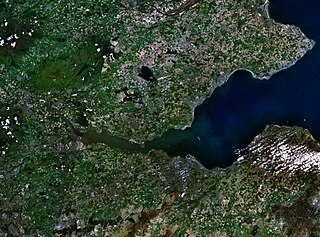
Robert Henryson was a poet who flourished in Scotland in the period c. 1460–1500. Counted among the Scots makars, he lived in the royal burgh of Dunfermline and is a distinctive voice in the Northern Renaissance at a time when the culture was on a cusp between medieval and renaissance sensibilities. Little is known of his life, but evidence suggests that he was a teacher who had training in law and the humanities, that he had a connection with Dunfermline Abbey and that he may also have been associated for a period with Glasgow University. His poetry was composed in Middle Scots at a time when this was the state language. His writing consists mainly of narrative works. His surviving body of work amounts to almost 5000 lines.

David Beaton was Archbishop of St Andrews and the last Scottish cardinal prior to the Reformation.

Earl of Gosford is a title in the Peerage of Ireland. It was created in 1806 for Arthur Acheson, 2nd Viscount Gosford.

St Mirren Football Club is a Scottish professional football club based in Paisley, Renfrewshire, that competes in the Scottish Premiership after winning the 2017–18 Scottish Championship. Founded in 1877, the team has two nicknames: The Buddies and The Saints.

The British Rail Class 320 is an electric multiple unit (EMU) passenger train found on the Strathclyde rail network in Central Scotland. They are mainly used on the North Clyde Line and the Argyle Line, but they can also be seen on Glasgow Central to Lanark and Cathcart Circle and Inverclyde Line services. The Class 320 uses alternating current (AC) overhead electrification.
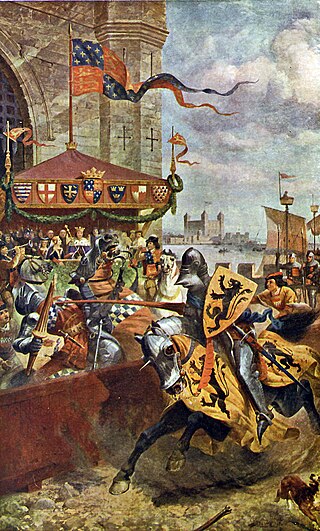
David Lindsay, 1st Earl of Crawford was a Scottish peer who was created Earl of Crawford in 1398.
The Battle of Faughart was fought on 14 October 1318 between an Anglo-Irish force led by John de Bermingham and Edmund Butler, Earl of Carrick, and a Scottish and Irish army commanded by Prince Edward Bruce, Earl of Carrick, brother of King Robert I of Scots. It was a battle of the First War of Scottish Independence and more precisely the Irish Bruce Wars. The defeat and death of Bruce at the battle ended the attempt to revive the High Kingship of Ireland. It also ended, for the time being, King Robert's attempt to open up a second front against the English in the Wars of Scottish Independence.
Henry of Atholl, the son of Maol Choluim, was Mormaer of Atholl, Scotland, from sometime in the 1190s until his death in 1211. Henry had no sons, but did have at least two daughters—Isabella and Forbhlaith. Before he died, Henry married off Isabella to Thomas, brother of the second-most important man in Scotland, Alan, Lord of Galloway. Henry also married off Forbhlaith to Sir David de Hastings.
Padraig or Patrick of Atholl was Mormaer of Atholl, from 1236/7 until 1241. The Chronicle of Melrose tells us that while he was lodging in Haddington, East Lothian, his enemies, "most wicked men," torched his lodging, killing both him and his two unknown companions. The chronicle had a high opinion of Padraig, and says that Padraig was "one imbued with all courtly wisdom and wit."
Gille Críst, Earl of Angus ruled until 1206 as Mormaer of Angus. He was a son of Gille Brigte of Angus and younger brother of Adam of Angus.

"The Great Silkie of Sule Skerry" or "The Grey Selkie of Sule Skerry" is a traditional folk song from Orkney and Shetland. Sule skerry being a far flung island of the Orkney archipelago. A woman has her child taken away by its father, the great selkie of Sule Skerry which can transform from a seal into a human. The woman is fated to marry a gunner who will harpoon the selkie and their son.
The Justiciar of Lothian was an important legal office in the High Medieval Kingdom of Scotland.
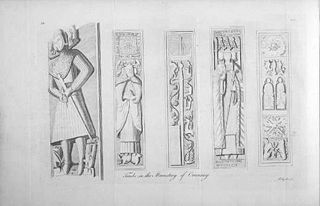
John of Islay was the Lord of the Isles (1336–1386) and chief of Clan Donald. In 1336, he styled himself Dominus Insularum, although this was not the first ever recorded instance of the title in use. Some modern historians nevertheless count John as the first of the later medieval Lords of the Isles, although this rather broad Latin style corresponds roughly with the older Gaelic title Rí Innse Gall, in use since the Viking Age. For instance, the even more similar Latin title dominus de Inchegal, applied to Raghnall Mac Somhairle in the mid-12th century. In fact John is actually styled Rí Innsi Gall or King of the Isles shortly after his death in a contemporary entry in the Irish Annals of Ulster. Clan Donald considers the title "Lord of the Isles" to have been in use at least since Angus Mor Macdonald, who died in 1293, and the title "King of the Isles" in use since Somerled, the Norse-Gael who forged the Kingdom of the Isles in the 12th century.

The Scottish people or Scots are an ethnic group and nation native to Scotland. Historically, they emerged in the early Middle Ages from an amalgamation of two Celtic peoples, the Picts and Gaels, who founded the Kingdom of Scotland in the 9th century. In the following two centuries, Celtic-speaking Cumbrians of Strathclyde and Germanic-speaking Angles of Northumbria became part of Scotland. In the High Middle Ages, during the 12th-century Davidian Revolution, small numbers of Norman nobles migrated to the Lowlands. In the 13th century, the Norse-Gaels of the Western Isles became part of Scotland, followed by the Norse of the Northern Isles in the 15th century.
David de Hastings, jure uxoris Earl of Atholl, was a Norman knight who possessed minor lands in Angus.
Events from the 1280s in the Kingdom of Scotland.
References
- ↑ Roberts 1997, pp. 54–5.